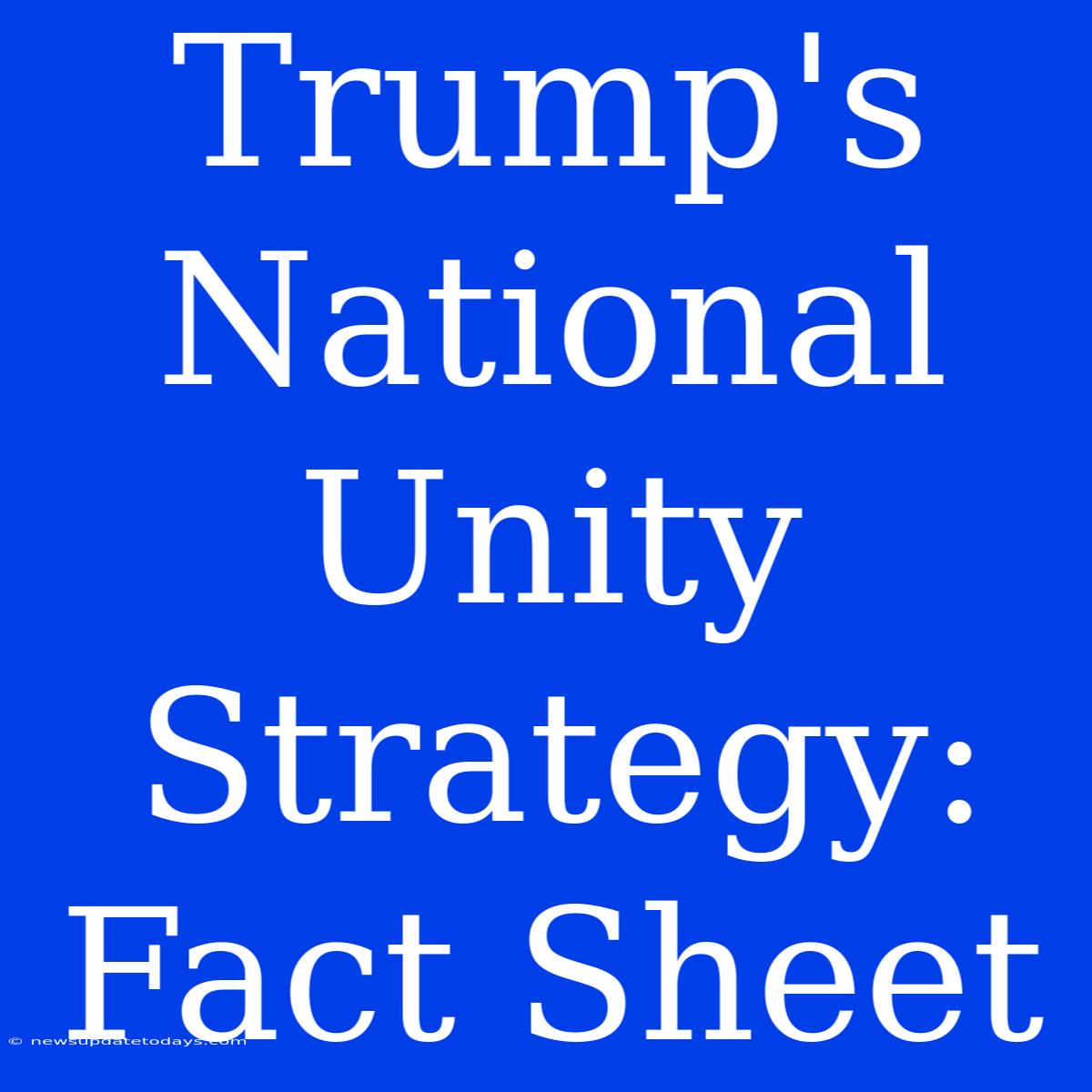Trump's National Unity Strategy: A Critical Examination
Donald Trump's presidency, marked by significant polarization, saw attempts at promoting national unity. This fact sheet analyzes the strategies employed, their effectiveness, and lasting impact. While claims of a cohesive national unity strategy are debatable, examining his initiatives provides valuable insight into his approach to governance and its consequences.
What Constitutes a "National Unity" Strategy?
Before evaluating Trump's actions, it's crucial to define what constitutes a national unity strategy. Genuine national unity transcends mere rhetoric; it requires policies and actions aimed at bridging divides, fostering inclusivity, and promoting shared goals. This includes addressing systemic inequalities, promoting dialogue, and prioritizing common interests over partisan agendas.
Trump's Actions: A Mixed Bag
Trump's approach to national unity was frequently characterized by contradictory actions and rhetoric. While he often invoked the theme of "unity," his policies and pronouncements frequently exacerbated existing divisions.
Initiatives Claimed to Promote Unity:
- Economic Policies: Tax cuts and deregulation were presented as beneficial to all Americans, stimulating economic growth. However, critics argued these policies disproportionately benefited the wealthy, widening the economic gap and fueling social unrest.
- Appointment of Conservative Judges: This was framed as restoring traditional values and upholding the Constitution. Opponents viewed these appointments as a threat to established rights and further polarized the judiciary.
- Focus on "America First": While promoting national interests, this approach was criticized for isolating the US from international alliances and fostering resentment among other nations.
Actions that Undermined Unity:
- Highly Divisive Rhetoric: Trump's frequent use of inflammatory language, attacks on the media, and accusations against political opponents deepened societal divisions and fueled polarization.
- Emphasis on Cultural Warfare: Focusing on issues like immigration and cultural identity exacerbated existing tensions and marginalized specific communities.
- Limited Engagement in Bipartisan Dialogue: A lack of meaningful attempts at compromise and collaboration with opposing political parties hindered any potential progress toward national unity.
Assessing Effectiveness and Lasting Impact:
The effectiveness of Trump's purported national unity strategy remains highly contested. While some might point to economic indicators during his term, the deep societal divisions and political polarization that persisted – and in some cases worsened – throughout his presidency suggest a significant failure in achieving genuine national unity. His legacy on national unity is largely viewed as negative, leaving a deeply polarized nation.
Conclusion:
Claims of a coherent and effective national unity strategy under Trump's administration are difficult to substantiate. While certain economic initiatives were presented as unifying, their impact was often overshadowed by highly divisive rhetoric, policies that exacerbated existing inequalities, and a general lack of bipartisan cooperation. The lasting impact is a nation further divided, underscoring the complexity of achieving genuine national unity and the crucial role of inclusive leadership and policies. Further research into specific policy outcomes and their impact on various demographic groups is needed for a more comprehensive understanding.

